Romaleon antennarium (Stimpson), Schweitzer and Feldmann, 2000Common name(s): Pacific rock crab, Common rock crab, Spot-bellied rock crab, Rock crab, Red rock crab |
|
| Synonyms: Cancer antennarius |  |
| Phylum Arthropoda
Subphylum Crustacea Class Malacostraca Subclass Eumalacostraca Superorder Eucarida Order Decapoda Suborder Pleocyemata Infraorder Brachyura Superfamily Cancroidea Family Cancridae |
|
| A male Romaleon antennarium, approximately 10 cm carapace width, from Hole in the Wall, Rialto Beach, WA. | |
| (Photo by: Dave Cowles July 2021) | |
How to Distinguish from Similar Species: This is one of the two large local Cancer crabs with black tips on their chelae. The other, Cancer productus, has a rough dorsal surface on its carapace and a few tubercles and has no ventral red spots. Its carapace is also produced (projected) forward between the eyes. Other Cancer crabs with black chelae, such as Glebocarcinus oregonensis, have a tuberculate carapace which is usually less than 6 cm wide and is not 1.5x or more as wide as long.
Note: Species formerly in genus Cancer have been recently subdivided into several genera (Ng et al., 2008; Schweitzer and Feldmann, 2010). Of our local genera, Cancer, Romaleon, and Metacarcinus have a carapace wider than long plus only scattered setae on the carapace margins and legs while Glebocarcinus has a carapace of approximately equal length and width, often with granular regions and with setae along the edges; and setae on the outer surface of the chela as well as on the legs. Metacarcinus can be distinguished from Cancer because Metacarcinus has anterolateral carapace teeth which are distinct and sharp plus the male has a rounded tip to the telson, while Cancer has anterolateral carapace teeth which are low, lobed, and separated by deep fissures plus the male has a sharply pointed telson (Schram and Ng, 2012). Romaleon can be distinguished from Cancer and Metacarcinus because it has a distinct tooth on the anterior third of the posterolateral margin of the carapace while the other two genera do not.
Geographical Range: British Columbia to Cabo San Lucas, Baja California but rarely seen north of Coos Bay, Oregon. (But common in Barkley Sound on Vancouver Island)
Depth Range: Intertidal to 91 m, usually less than 45 m.
Habitat: Common in the low rocky intertidal. Often found under rocks, sometimes partly buried in sand under the rocks. Subtidally may be on gravel bottoms or in kelp beds. Especially common on the exposed coast.
Biology/Natural
History: Food includes
scavenged bits and animals such as Chlorostoma
funebralis and hermit crabs. It captures
the hermit crabs
by gradually chipping away the edges of the hermit's shell until the
hermit
crab has nowhere else to hide. Sometimes harvested by humans
for
crab legs. In California, become mature in about 2
years. Berried
(egg-carrying) females are most often seen November to
January. The
young have vivid color patterns on the carapace
similar to those of C. productus young. Most active at night.
| Return to: | |||
| Main Page | Alphabetic Index | Systematic Index | Glossary |
References:
Dichotomous Keys:Kozloff 1987, 1996
Smith and Carlton, 1975
Wicksten, 2009
General References:
Brandon
and Rokop, 1985
Hinton,
1987
Jensen,
1995
Johnson
and Snook, 1955
Kozloff,
1993
McConnaughey
and McConnaughey, 1985
Morris
et al., 1980
Niesen,
1994
Niesen,
1997
Ricketts
et al., 1985
Scientific
Articles:
Burnett, Nicole, 2024: A practical identification guide to the zoeae of the invasive European green crab, Carcinus maenas (Linnaeus, 1758) (Decapoda: Brachyura: Carcinidae), and to the zoeae of the families of brachyuran crabs in Washington state, USA. Journal of Crustacean Biology 44:4. doi.org/10.1093/jcbiol/ruae064
Web sites:
General Notes and Observations: Locations, abundances, unusual behaviors:
| Although this species is rarely found north of Coos Bay, OR; in July 2021 we found multiple individuals, including reproducing adults, at Hole in the Wall, Rialto Beach, WA, as shown in the photos below. Notice the reddish-purple spots on the underside of the carapace that are characteristic of both males and females of this species: |
| This female, about 8 cm in carapace width, is heavily gravid ("berried") with eggs. She was partly buried in the sand among rocks. Photos by Dave Cowles, July 2021 |
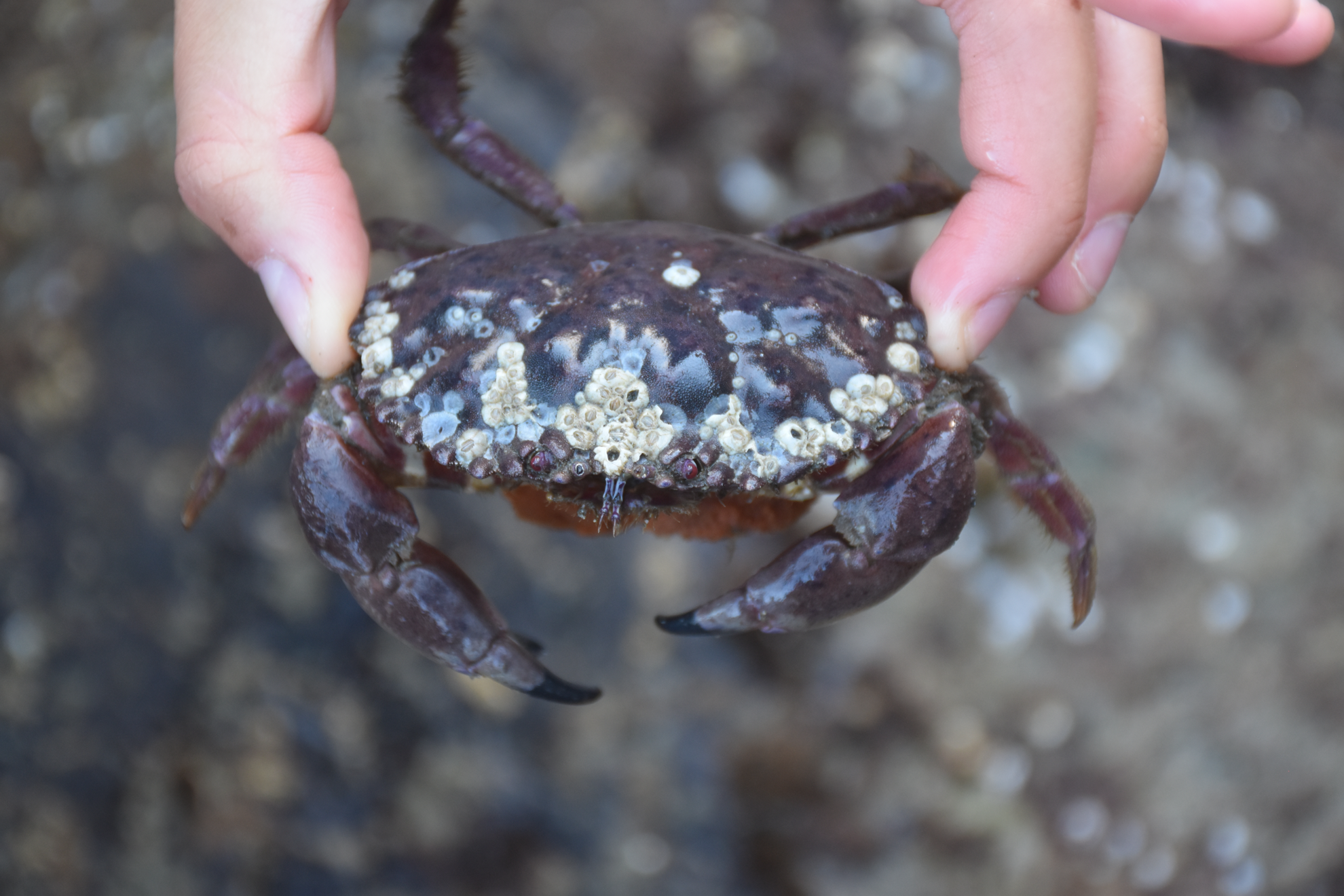 |
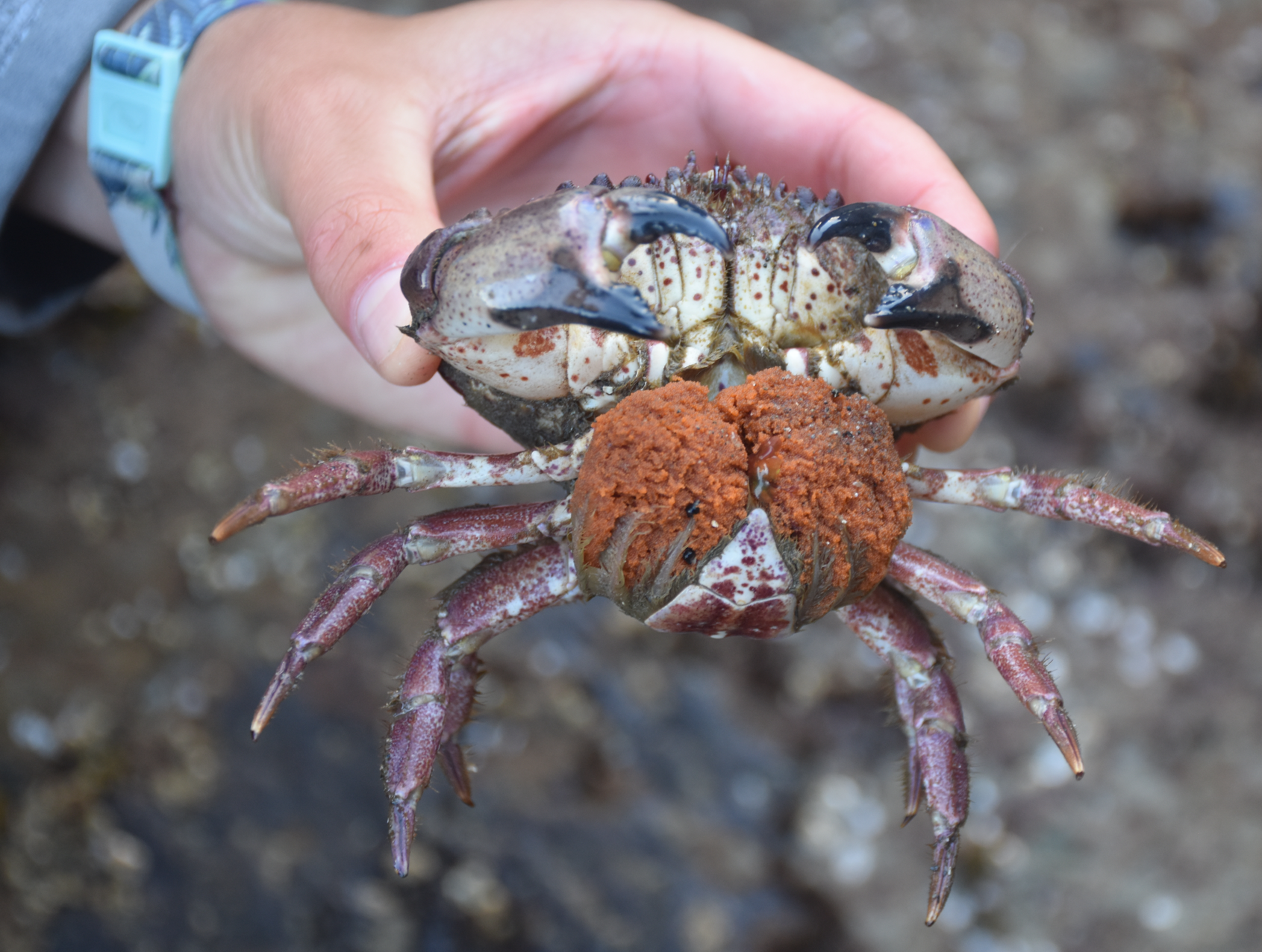 |
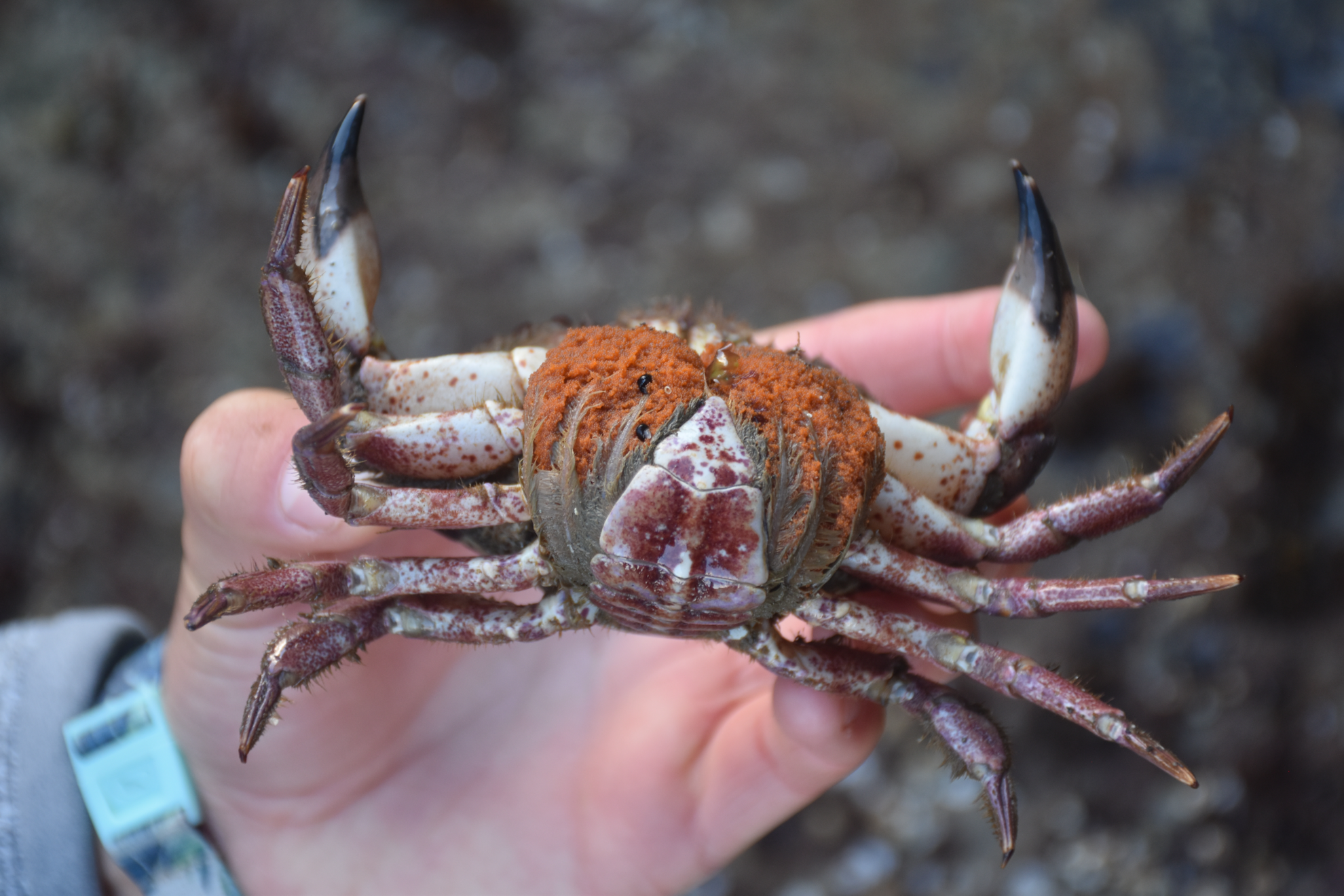 |
| This male, about 10 cm carapace width, also appears to be of reproductive age. Photos by Dave Cowles, July 2021 |
 |
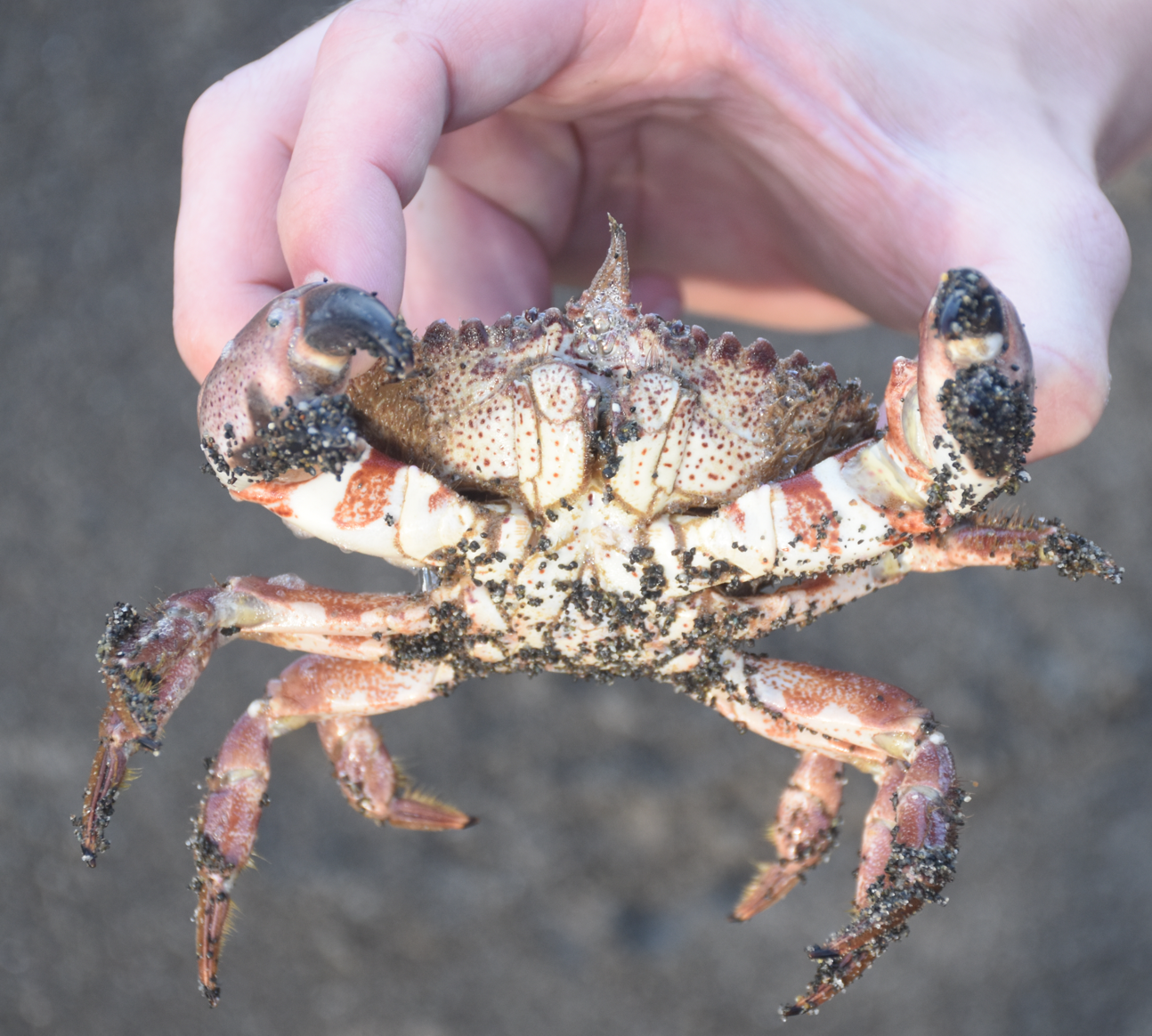 |
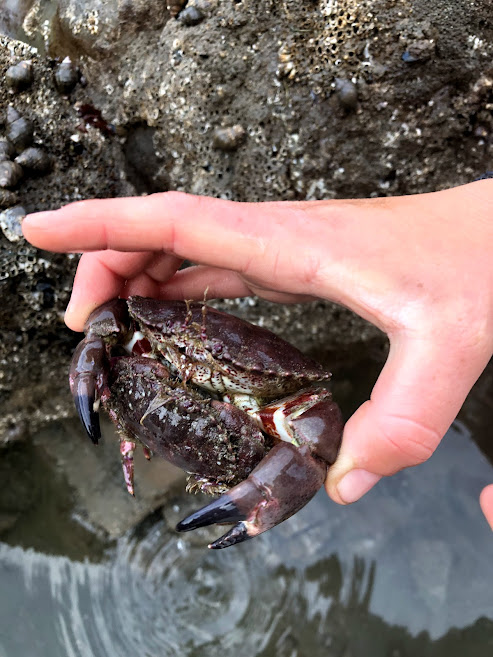 |
| This photo, by Maggie Justice and Josie Parks, shows a mating pair at Hole in the Wall, Rialto Beach. Mating takes place at the time of the female's molt, when her gonopores are soft and open. Males detect females ready to molt and pick them up, holding them underneath themselves. They protect and also mate with them during their vulnerable molting process. They continue to hold them until the female's new exoskeleton has hardened. The growths present on this female's carapace suggest that she has not yet molted. |
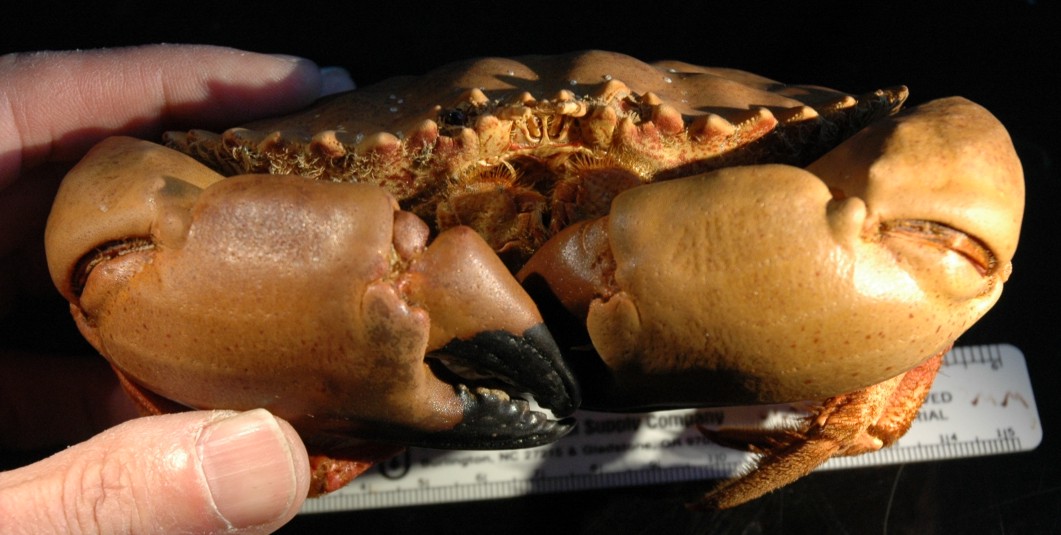
The claws of Romaleon antennarium are tipped in
black.
Photos of a preserved specimen from California by Dave Cowles, 2008
Authors and Editors of Page:
Dave Cowles (2007): Created original page
